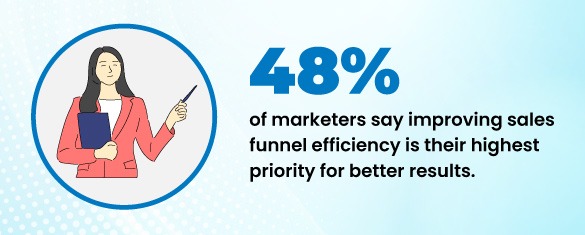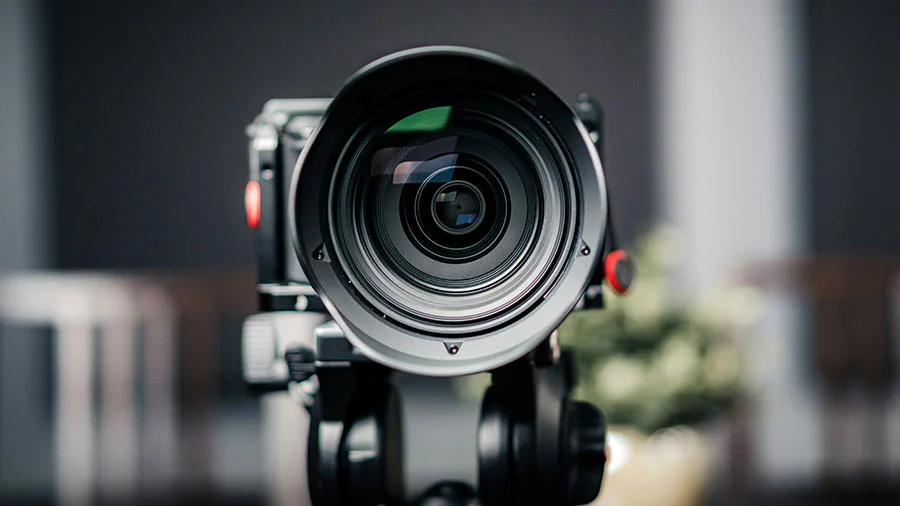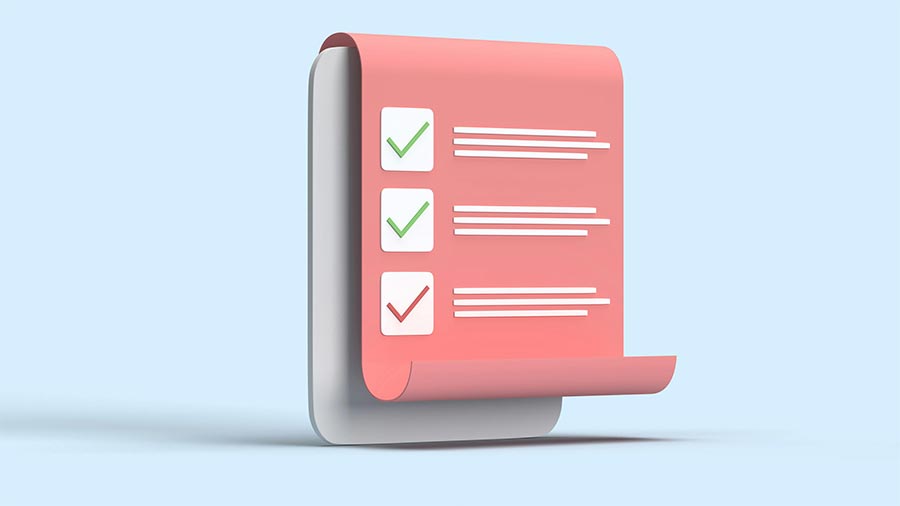A well-optimized B2B marketing funnel is key to converting leads into loyal customers. By strategically nurturing leads through various stages—from awareness to purchase—you can boost your sales and drive growth. Today’s marketers, especially the younger generation, are embracing new tactics like video and influencer marketing alongside traditional methods like ads and case studies to engage their audience. But how do you guide prospects through each phase of the funnel? In this article, we’ll break down the different stages of the marketing funnel, explain how to create one tailored to your business, and explore effective strategies to nurture prospects at every step of the journey.
What is a B2B Marketing Funnel?
A marketing funnel is a model that illustrates the stages a potential customer goes through, closely mirroring the customer journey funnel, which encompasses every interaction from initial awareness to post-purchase advocacy. The funnel helps businesses understand where prospects are in their buying journey, enabling marketers to tailor their strategies accordingly. The marketing funnel framework begins with a broad range of prospects and narrows down to a deeper understanding of who your leads are, what they’re looking to buy, and their potential interest in future purchases. To maximize its effectiveness, it’s crucial to understand how each stage of the marketing funnel works together and then apply targeted strategies for each. Additionally, the funnel helps identify strengths and weaknesses in your customer journey, allowing you to optimize your marketing efforts. While not all leads will convert, a well-structured marketing funnel ensures that the highest-quality prospects move through each stage, increasing the likelihood of turning them into loyal customers through consistent and strategic lead generation.
The Evolution of the Marketing Funnel Strategy
The B2B buying process has undergone significant changes in recent years. Traditionally, B2B buyers relied heavily on salespeople for information and guidance. Today, however, buyers are more independent, conducting extensive research online.
In fact, 89% of B2B researchers use the internet in their decision-making process, performing an average of 12 searches before engaging with a specific brand. This shift has made traditional linear marketing funnel frameworks—moving from awareness to consideration to decision—less effective. Instead, online marketing funnels must adapt to a more dynamic and non-linear buyer journey, where prospects enter and exit at various stages based on their research and needs.
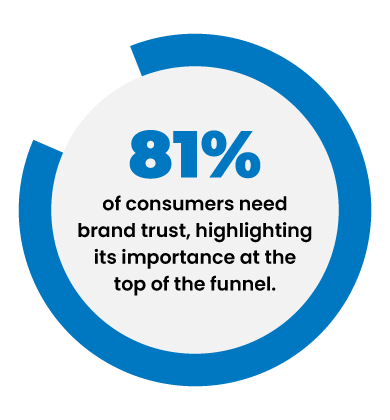
To adapt to these changes, B2B marketers must engage with buyers at every stage of their evolving journey. This is where account-based marketing (ABM) becomes invaluable. ABM focuses on targeting specific accounts rather than casting a wide net, enabling more personalized and tailored outreach. By aligning marketing and sales efforts around key accounts, ABM creates a more meaningful and effective experience for buyers. It bridges the marketing and sales funnels by fostering collaboration between teams, allowing for more relevant and customized messaging, content, and engagement with prospects. By integrating data and strategy, businesses can respond quickly to changes in the market and customer behavior, driving a more efficient path to revenue.
Benefits of B2B Marketing Funnel Strategy
A well-structured digital marketing funnel is a powerful asset for any business aiming to convert prospects into loyal customers. Here are six major benefits of using a marketing funnel:
Increased sales: A thoughtfully designed digital marketing funnel streamlines the buying process, making it easier for customers to make informed decisions. By eliminating friction and offering clear next steps, businesses can boost conversions. Research shows that simplifying the path to purchase can make you 62% more likely to close high-quality, premium sales.
Better customer retention: The bottom of the marketing funnel doesn’t just convert leads—it also fosters loyalty. Retaining existing customers is more cost-effective than acquiring new ones, and a strong funnel ensures that customers continue to engage and purchase. Follow-up strategies, loyalty programs, and personalized offers all help in maintaining long-term relationships.
More targeted marketing: Marketing funnels allow for segmentation based on where a customer is in their journey—awareness, consideration, or decision. This enables businesses to deliver personalized content and offers tailored to specific needs. According to McKinsey, 71% of consumers expect brands to deliver personalized experiences, and funnel-based strategies make this possible.
Clear customer insights: Funnels provide a clear picture of how customers move through each stage, offering insights into behaviors, preferences, and pain points. This data is crucial for refining marketing strategies and improving the overall customer experience.
Efficient resource allocation: Knowing which stages convert best allows businesses to focus their time and budget where it matters most. Instead of spreading resources thin, marketers can double down on high-performing channels and optimize underperforming touchpoints.
Higher conversion rates: By nurturing leads with relevant content and strategic messaging at every stage, businesses can increase engagement and trust, two key drivers of conversion. A smooth, well-aligned funnel ensures fewer drop-offs and more customers progressing toward a purchase.
Marketing Funnel vs. Sales Funnel
The primary difference between a B2B sales and marketing funnel and a sales funnel lies in their purpose and focus within the customer journey. The B2B content marketing funnel is designed to build awareness, generate interest, and attract potential leads by casting a wide net through brand messaging, advertising, content marketing, and SEO strategies. It focuses on educating and engaging prospects at the top of the funnel (TOFU) and nurturing them with relevant content as they move through the middle (MOFU).

The sales funnel for B2B takes over once leads are qualified, aiming to convert them into paying customers through a more targeted approach. It involves personalized outreach, email campaigns, product demos, and follow-ups to guide prospects through evaluation and purchase decisions at the bottom of the funnel (BOFU). While the marketing funnel is broader and long-term in approach, the sales funnel for B2B is narrower and more direct, focused on driving conversions and revenue.
In a well-aligned B2B sales and marketing funnel, both functions work hand in hand—successful marketing fuels the sales pipeline, and effective sales strategies reinforce marketing efforts. Together, they form a cohesive system where marketing builds the relationship and sales closes the deal, ensuring a seamless and optimized customer journey from brand discovery to purchase and loyalty.
Breaking Down B2B Marketing Funnel Stages
In B2B marketing, guiding potential buyers through a clear and strategic funnel is essential to drive conversions and long-term business success. Now that you understand the B2B marketing funnel stages, it’s time to build one tailored to your business. Begin by mapping out the marketing journey:
1. Awareness
The B2B funnel marketing begins with the awareness stage, where the objective is to capture attention and introduce your brand to potential buyers. In this phase, businesses aim to establish brand recognition through channels that meet their target audience where they are, such as LinkedIn ads, SEO, webinars, blogs, display advertising, and thought leadership articles. It’s about educating and positioning your brand as a credible player in the industry. For B2B marketers, this means building visibility not just for the brand but also for solutions that address specific business pain points. At this stage, you’re not selling yet—you’re planting the seed.
2. Consideration
Once awareness is established, prospects move into the consideration phase. Here, they begin evaluating solutions to their challenges and comparing vendors. The focus is on building trust, demonstrating value, and positioning your offering as a superior choice. Content like whitepapers, eBooks, detailed case studies, webinars, and ROI calculators can be especially effective. This is also the point where personalized marketing and account-based strategies become critical. B2B buyers need clear evidence of how your solution works, how it has helped similar companies, and why it is better than competing options.
3. Conversion
At the conversion stage, the goal is to persuade leads to take action—whether that’s signing a contract, starting a free trial, or requesting a demo. This stage is crucial, as it directly impacts revenue. Marketers and sales teams must work closely together to ensure a seamless handoff and consistent messaging. Tactics such as offering tailored demos, pricing pages, detailed product documentation, and one-on-one consultations are key. In addition, having strong proof points—like customer success stories and in-depth testimonials—can boost confidence and reduce friction in decision-making.
4. Loyalty
The funnel doesn’t end at conversion. In the B2B content marketing funnel, retaining customers and turning them into loyal advocates is just as important as acquiring them, especially where customer lifetime value is high. The loyalty phase focuses on sustained engagement, exceptional post-sale support, and continued value delivery through on boarding, training, and consistent communication. Companies can strengthen these relationships via customer success programs, newsletters, feedback surveys, and exclusive content. A loyal B2B customer is not only more likely to renew or upgrade but can also refer new clients and provide testimonials that drive future awareness and consideration.
5. Advocacy
At this stage, satisfied customers become brand champions, sharing their positive experiences and influencing others. In B2B, advocacy fuels long-term growth through referrals, testimonials, case studies, and peer recommendations. Marketers can foster advocacy by recognizing and rewarding loyal customers, launching ambassador programs, and involving them in co-marketing initiatives such as speaking engagements or joint webinars. When properly nurtured, advocates significantly boost your brand’s credibility and attract new prospects, effectively restarting the B2B funnel marketing stages through authentic, trust-building word-of-mouth from those who have experienced your value first-hand.
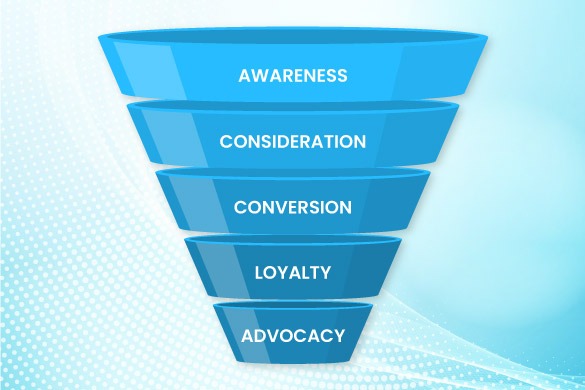
How to Build a Marketing Funnel?
Developing a sales funnel for B2B marketing involves understanding how your audience moves from first discovering your brand to ultimately becoming loyal customers. It’s about guiding potential buyers through every stage of the customer journey funnel with strategic messaging, relevant content, and timely engagement. Here’s a step-by-step process to build a high-converting marketing funnel:
Understand your audience: Before you can guide prospects through a funnel, you need a clear understanding of who they are. Research your target audience’s needs, pain points, behaviors, and motivations. Use customer interviews, surveys, analytics, and social listening to gather insights. These findings will shape your messaging and ensure your marketing speaks directly to your ideal buyers.
Define each stage of the marketing funnel: Map out what each phase of the awareness, consideration, conversion, and retention looks like for your business. Common marketing funnel examples include social media ads or blog content at the awareness stage; product comparison pages or case studies during consideration; free trials or limited-time offers for conversion; and onboarding emails, loyalty programs, or customer support follow-ups for retention.
Create relevant content for every stage: Content is the engine that moves prospects through the sales funnel for B2B marketing. Develop educational and engaging content that matches the intent at each stage. At the top, publish blog posts, videos, and social content to generate awareness. In the middle, use whitepapers, webinars, or product demos to build trust. At the bottom, offer testimonials, case studies, and limited-time deals to drive conversion. After the sale, keep customers engaged with onboarding content, how-to guides, and personalized updates.
Choose the right marketing channels: Select channels based on where your audience spends time and how they prefer to engage. For awareness, platforms like Google, LinkedIn, or YouTube work well. Email marketing and retargeting ads are effective for nurturing leads in the consideration stage. For conversions, rely on direct outreach, landing pages, or trial offers. Post-sale, tools like email automation and in-app messaging can keep customers engaged and loyal.
Implement lead capture and tracking: To effectively move leads through your marketing funnel, you need mechanisms to capture their information and track their behavior. Use forms, sign-up popups, or lead magnets (like free resources or discounts) to collect emails. Then, use analytics and CRM tools to monitor how they interact with your content and website. This data helps you segment your audience and deliver more personalized experiences.
Test, optimize, and refine: Marketing funnels aren’t static—they should evolve as your audience, market, and business change. Continuously analyze performance across all stages using key metrics like conversion rate, bounce rate, and customer lifetime value. A/B test your content, calls to action, emails, and landing pages to identify what works best. Use these insights to refine your funnel and improve outcomes over time.
How to Measure and Optimize Your Marketing Funnel
Optimizing your marketing funnel begins with clearly understanding your KPIs (key performance indicators) and metrics. Though often used interchangeably, they serve distinct roles in your marketing strategy. KPIs are the strategic objectives aligned with business goals, such as increasing marketing qualified leads by 20% or reducing CAC by 15%, while metrics are the supporting data points (e.g., website traffic, email click-throughs) that help track progress toward these goals.
To measure your funnel effectively, map KPIs to each stage of the buyer journey—from awareness to conversion. For instance, in the top funnel, metrics like impressions, social engagement, and website visits help assess brand visibility. Mid-funnel KPIs, such as MQLs and content downloads, indicate audience interest and lead quality. Bottom-funnel KPIs—like SQLs, lead-to-customer conversion rate, and demo-to-close ratio—show sales readiness and pipeline efficiency. Optimization starts by identifying weak links. If MQLs aren’t converting to SQLs, evaluate your lead scoring or lead nurturing tactics. If CAC is too high, assess which channels yield the best ROI and reallocate the budget accordingly. Use tools like attribution modelling and funnel analytics to identify high-performing touchpoints and friction areas. For better decisions, track these data points consistently. Regular monitoring helps you respond quickly to underperformance, re-engage stagnant leads, or capitalize on emerging trends, ensuring your strategy remains agile and data-driven.
In 2025, prioritize metrics such as Customer Lifetime Value (CLV), Pipeline Velocity, ARPU, and Churn Rate. These provide deep insights into your marketing performance and long-term profitability. For businesses operating within a B2B SaaS marketing funnel, metrics like monthly recurring revenue (MRR) and onboarding completion rate are also critical. Choose KPIs that align with your business goals. If increasing revenue is a priority, focus on metrics like new MRR, expansion MRR, and conversion rates. If improving retention, track CSAT scores, onboarding completion, and churn.
Challenges and Solutions to the Marketing Funnel
Marketing funnel challenges often arise from misaligned messaging, ineffective nurturing, and low conversion rates—making it hard to move prospects forward. Here are the challenges and solutions to the marketing funnel:
1. Adapting to Changing Buyer Behavior
Modern B2B buyers self-educate before engaging with sales, relying heavily on peer reviews and social proof. Traditional funnels no longer apply.
Solution: Marketers must focus on demand creation, not just capturing. Offer upfront value through educational content, transparent pricing, free trials, and interactive demos to build trust earlier in the journey.
2. Budget and Resource Constraints
Many teams face reduced budgets and headcounts, making it tough to scale marketing funnel activities effectively.
Solution: Prioritize high-impact initiatives. Focus on fewer, high-quality marketing campaigns. Revisit past data to identify what worked, streamline internal workflows, and eliminate distractions to maximize output with minimal resources.
3. Measuring ROI and Attribution
Attributing ROI in long B2B sales cycles is challenging, especially for top-of-funnel efforts.
Solution: Shift to a demand generation model. Blend qualitative and quantitative metrics. Work closely with finance and sales to track performance across the buyer journey. Use advanced attribution tools like HockeyStack for full-funnel visibility.
4. Choosing the Right Marketing Channels
With so many options, teams struggle to allocate budget and focus effectively.
Solution: Understand your ICP and where they spend time. Instead of trying to be everywhere, double down on the highest-performing channels like LinkedIn, SEO, and events. Activate employee advocacy and guest contributors to boost reach and credibility.
5. Executing Account-Based Marketing (ABM)
ABM is powerful but hard to scale and prove ROI without the right strategy.
Solution: Align sales, marketing, and product to define clear ICPs. Use account segmentation and a “propensity to buy” grid to focus resources. Personalize outreach and track results collaboratively.
6. Content Saturation and AI Fatigue
Generic or AI-generated content risks poor engagement and lower rankings.
Solution: Create authentic, high-value content that offers new perspectives (information gain). Collaborate with subject matter experts, invest in video and podcast formats, and repurpose high-performing assets. Focus on helpful, user-centric content to stay competitive.
Conclusion
In today’s B2B world, having a clear marketing funnel is a must. Every stage—from making people aware of your brand to keeping loyal customers—needs smart planning and teamwork. When you understand how your buyers think and act, you can better connect with them, get more leads, and grow your business. The funnel isn’t a straight line anymore—it changes based on data and buyer behavior. That’s why it’s important to keep testing and improving your approach. Using tools like ABM, CRM, and analytics helps create smooth, helpful experiences for your audience. In the end, a strong funnel helps you win better leads and turn them into loyal fans of your brand.


